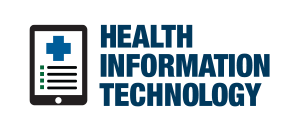- 21 QCDR measures
- 22 MIPS measures
For 2021, CMS has approved ACEP’s yearly QCDR self-nomination for the fifth straight year. In addition to measures available this year, the Quality Team successfully built and nominated five new measures:
Explore This Issue
ACEP Now: Vol 40 – No 01 – January 2021- ACEP 54: Appropriate Utilization of FAST Exam in the Emergency Department
- ACEP 55: Emergency Department Utilization of CT for Minor Blunt Head Trauma for Patients Aged 2 Through 17 Years (formerly ACEP 20)
- ACEP 56: Follow-Up Care Coordination Documented in Discharge Summary
- ACEP 57: Avoidance of Opioid Therapy for Migraine, Low Back Pain, and Dental Pain
- ACEP 58: Appropriate Treatment for Adults with Upper Respiratory Infection (URI)
 Data alone don’t solve problems; they must be transformed into knowledge to have applicable value. The Data Science team utilizes five years of CEDR data to bridge the clinical gaps and democratize data through the analytics platform that will drive improved outcomes and facilitate new EM research. Current data science projects include:
Data alone don’t solve problems; they must be transformed into knowledge to have applicable value. The Data Science team utilizes five years of CEDR data to bridge the clinical gaps and democratize data through the analytics platform that will drive improved outcomes and facilitate new EM research. Current data science projects include:
- Build relationships with the Centers for Disease Control and Prevention (CDC) National Syndromic Surveillance Program:
- Outbound Data: Diagnostic information on influenza-like visits
- Inbound Data: Department of Health and Human Services (HHS) region breakdown of ED visits
- Improve the performance of the CDC National Hospital Ambulatory Medical Care Survey process
- Opioid research with the National Institutes of Health/National Institute on Drug Abuse
- Cutting-edge health IT tools for scaling health research with HHS Office of the National Coordinator/Medstar
- National diagnostic performance dashboard with the Agency for Healthcare Research and Quality/Johns Hopkins University
- A bacterial meningitis measure with the American Academy of Neurology
- A Moore Grant for pulmonary embolism measure development
 HIT encompasses a broad scope of work that includes mining health information exchanges to improve health care quality, safety, and efficacy. HIT programs help discover and drive efforts to reduce clinical burnout, especially by addressing inefficiencies across electronic medical record systems. Learn more.
HIT encompasses a broad scope of work that includes mining health information exchanges to improve health care quality, safety, and efficacy. HIT programs help discover and drive efforts to reduce clinical burnout, especially by addressing inefficiencies across electronic medical record systems. Learn more.
HIT efforts are stewarded by ACEP’s newest committee, the Health Innovation & Technology Committee (HITC). The HITC is working with ACEP staff to “develop a plan to insert ACEP at the center of health information/innovation policy development and management, using data-driven advocacy and leveraging new technologies to improve emergency care delivery and patient outcomes.”
The landscape of emergency medicine and acute care has changed so much in the past five years and continues to transform rapidly. While the future is difficult to predict, the ACEP Quality Team is taking the pioneering spirit that built the College to move boldly forward with a vision for the future.
Pages: 1 2 3 | Single Page





No Responses to “ACEP’s Quality Team Leads a Digital Transformation in Five Areas”